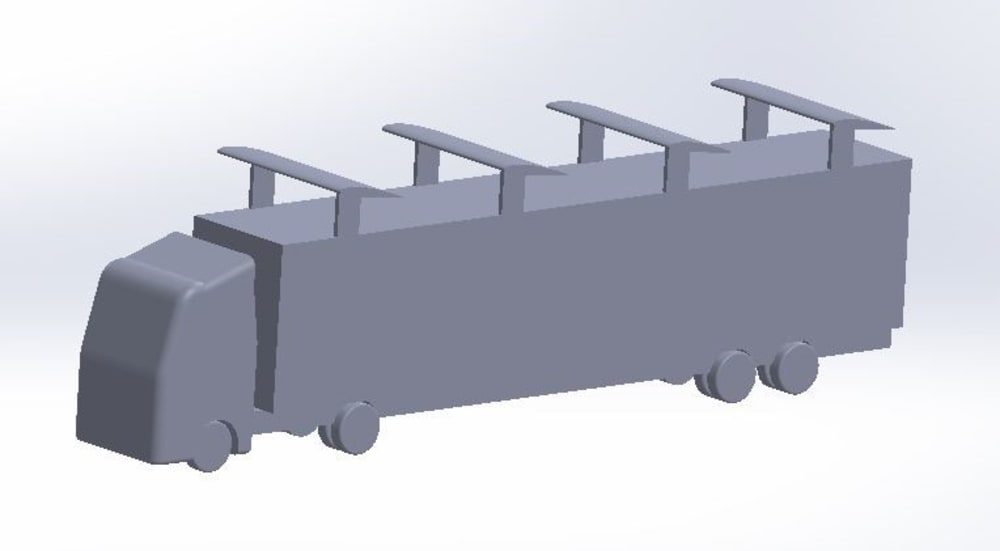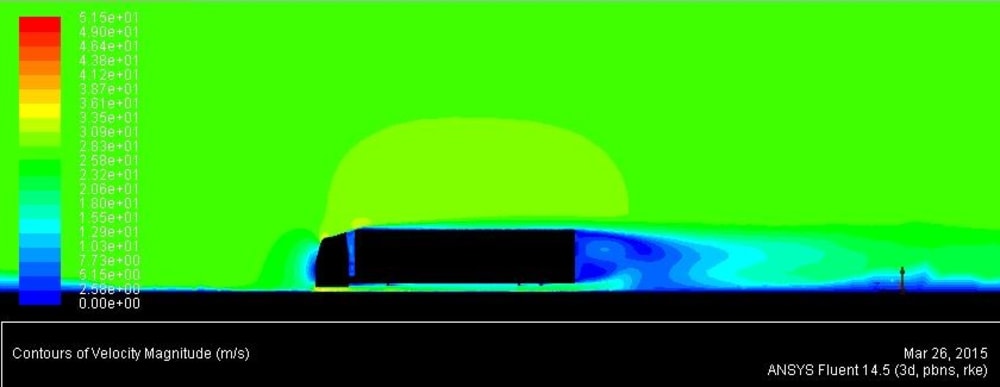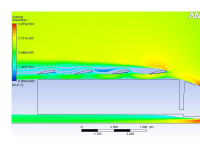The concept of reducing the resultant downward force by using aerodynamic lift is being studied in the present work. This lift is induced by a series of wings attached on the top of the vehicle. To validate the proposed method 3D models of two test vehicles, one medium duty vehicle and one light duty vehicle are modelled using SOLIDWORKS. 3D external flow analysis is performed,using ANSYS FLUENT, with and without the addition of the wings. The results of Lift and Drag are compared from the two setups. The values of lift are converted to virtual weight reduced and the reduction in fuel consumption is calculated based on the statistics given in "On the Road in 2035 - MIT Energy Initiative,Chapter-3"
The vehicles under study travel at an average speed of 100km/h on the highways. Thus the aerofoil profile used should be of low speed type. The NACA 2412 aerofoil profile is used for the Cessna 152 trainer jet which takes off at a speed of 100km/h. Thus this profile is chosen for the present study.
No of wings : 4
Chord length : 1m
Span : 3m
Total span : 12m
Average speed: 100kmph
CFD simulation in ANSYS Fluent: All the boundary conditions applied are used from the settings specified by the developers of ANSYS fluent.
RESULTS OBTAINED
From the CFD simulation:
Without wing With Wing Difference
TRUCK
Lift : -769N 3334N 4103N
Drag :3112N 3513N 401N
Lift = 4103 N
Weight reduction = 4103/9.8 = 418.6kgs
Calculation of fuel efficiency
Truck:
Weight reduction = 418.6 kgs
Reduction in fuel consumption per 100km = 418.6 x ( 0.32/100) = 1.34 L/100km
% increase in drag = 12.8%
Fuel consumed = 1L/100km
Resultant reduction in fuel consumption = 0.34 L/100km
Average annual distance travelled = 67000 miles = 107200 km
Total reduction in fuel consumption = 107200 x (0.34/100) = 364.28 L
Cost per liter of fuel = 1$
Total savings = 364.28 $
Case Study:
Deutsche Post DHL Group has 15000 trucks working throughout the year in various countries.
Total savings per year = 15000 x 364.28 = 5,464,200 $
Like this entry?
-
About the Entrant
- Name:Abhinav Avs
- Type of entry:individual
- Software used for this entry:SOLIDWORKS and ANSYS FLUENT
- Patent status:none








